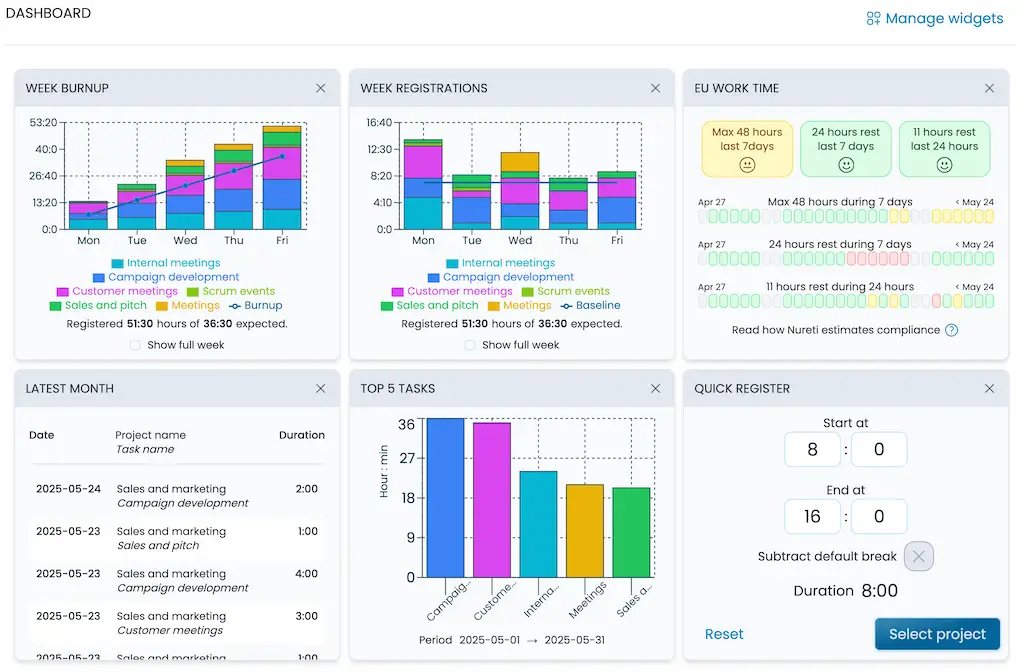Retail Time Tracking: How Stores Can Save Time and Control Costs
Published {$created} by Carsten Blum
Running a store means balancing many moving parts: stock, customers, staff schedules, and tight margins. In retail, time really is money — and without clear tracking, it’s easy for hours to get lost, payroll errors to creep in, and staff planning to fall behind.
The good news? Modern time tracking tools for retail make it simple to stay on top of hours, costs, and schedules — giving both managers and employees more control.

1. The Challenge Without Proper Time Tracking
Many retail stores still rely on manual systems:
Paper timesheets that get lost or filled in late
Excel spreadsheets with errors
Hours remembered from memory at the end of the week
The result? Inaccurate payroll, frustrated employees, and a lack of insight into labor costs — one of the biggest expenses in retail.
2. How Digital Time Tracking Helps
A digital time tracking system replaces guesswork with clarity:
Clock in/out from mobile or tablet – easy for staff on the shop floor
Automatic totals – no manual calculations
Real-time overview – managers see hours per employee and per store instantly
Integration – export data directly for payroll or reporting
Instead of chasing paper, you get reliable data that’s always up to date.
3. Benefits for Retail Owners and Managers
Retail time tracking isn’t just about payroll. It helps you:
Save admin time – fewer hours spent collecting and checking timesheets
Control labor costs – track overtime before it becomes a problem
Improve scheduling – know exactly how many hours each role needs
Boost transparency – employees see their logged hours and trust the process
The result is a smoother operation and fewer surprises at the end of the month.
![]()
4. A Simple Workflow for Stores
Here’s how retail time tracking can look in practice:
Employee clocks in on a shared device or mobile phone.
Hours are logged automatically and assigned to the right store or department.
Manager checks weekly overview in the dashboard.
Payroll is prepared with accurate data — no more guesswork.
This workflow saves time for both employees and managers.
5. From Hours to Better Customer Service
When staff hours are easy to manage, store managers can focus on what really matters: serving customers, training employees, and growing the business.
With less paperwork and fewer disputes over hours, the whole team benefits.
Conclusion: Smarter Time Tracking for Retail
Retail stores depend on efficient use of time. By moving from paper or spreadsheets to digital time tracking, you’ll cut admin, control costs, and give your employees clarity.
At Nureti, we’ve made time tracking simple enough for busy store teams, yet powerful enough to manage multiple locations.
Read our Quick Start Guide and see how easy it is to bring time tracking to your store.